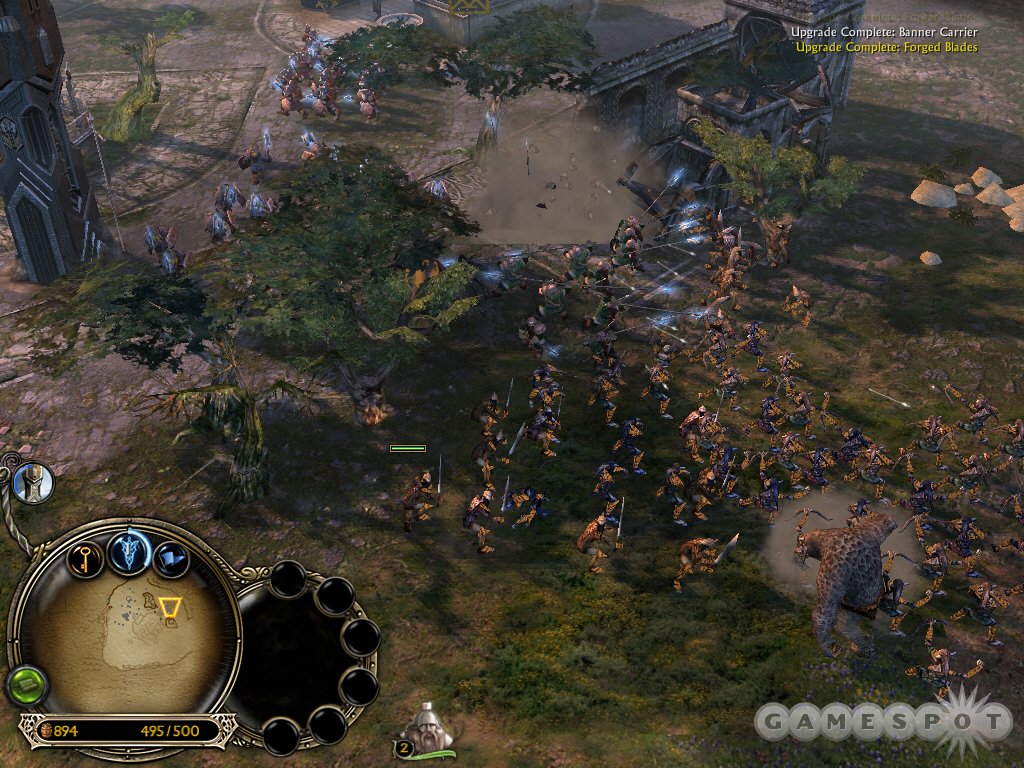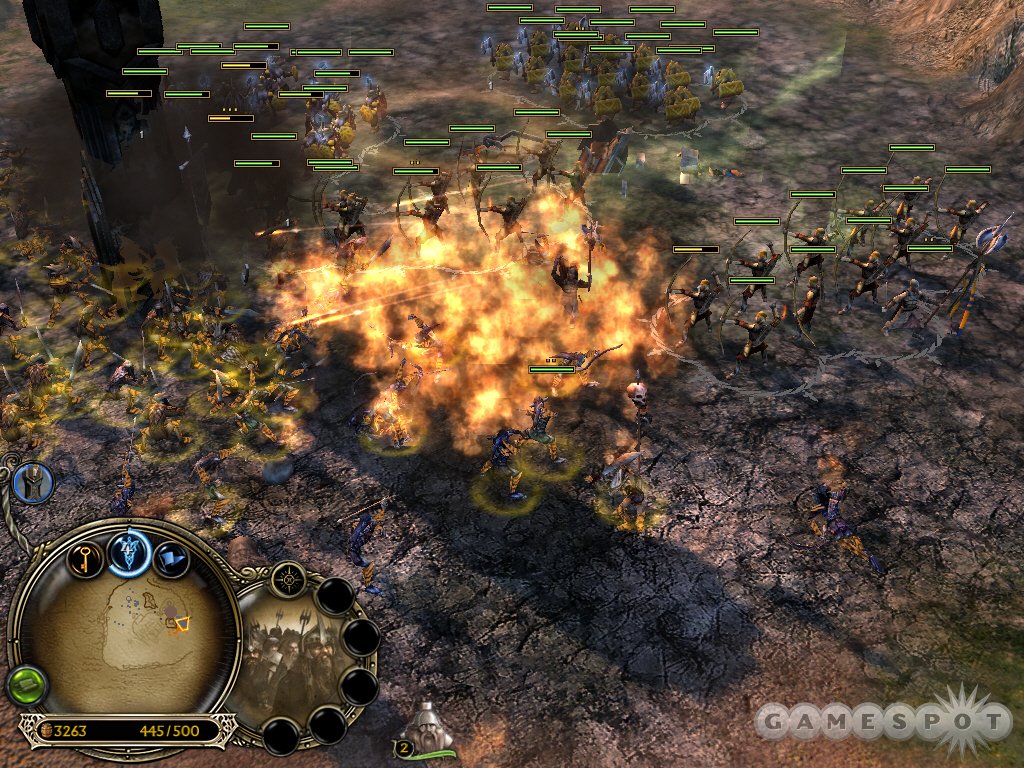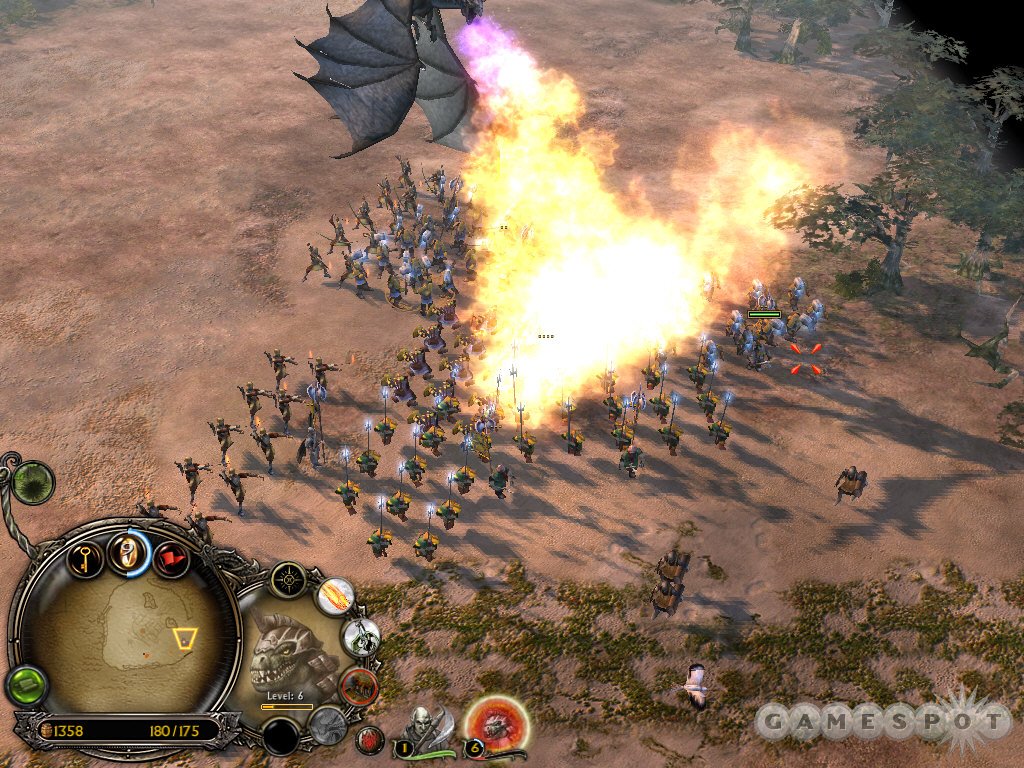The Lord of the Rings, The Battle for Middle-earth II Preview
The multiplayer beta test of The Battle for Middle-earth II gives us a first glimpse at what's new and improved in this real-time-strategy sequel.
Though the movie saga has come to a close (at least, until the movie studios can sort out the rights to The Hobbit), The Lord of the Rings continues to carry on in the realm of PC and console games. Next up is The Lord of the Rings, The Battle for Middle-earth II--the sequel to 2004's popular real-time-strategy game. Due out early this year for the PC (the recently announced Xbox 360 version is due out this summer), The Battle for Middle-earth II will focus on the major battles and campaigns that weren't shown in Peter Jackson's movies.

We've been playing around with the recently launched multiplayer beta test of the game. Currently, the multiplayer beta is very limited in terms of gameplay--only the regular skirmish mode is playable. The much more ambitious War of the Ring mode, which will let you play a long-term campaign against another player, is not available in beta. The skirmish mode is currently limited to up to four players, features only two maps, and has only two playable factions (there are six factions total), though both are new factions that weren't in the original game. The first new faction is the dwarves (represented by Gimli in the movie), and the other faction is the goblins, which aren't so much a single race as they are a group of different monster factions that include goblins, spiders, and others.
Playing the skirmish mode did let us see some of the key gameplay differences between the original game and the sequel. We can tell that EA took some of the feedback from the original game to heart, because The Battle for Middle-earth II features a number of key changes in the way base construction is handled. For example, in the original game, you could only build atop predetermined building nodes, which meant that you couldn't really design your own base. While this feature was meant to maintain game balance by preventing one side from simply outproducing the other, strategyveterans didn't appreciate the limitation. The Battle for Middle-earth II now lets you build your base as you would in other games--you can place buildings wherever you want. You're only limited by the amount of space you have to build and the resources at your disposal.
Speaking of which, the resource-gathering model has also undergone change. In the original game, you collected generic resources by building farms and lumber mills in certain areas on the map. Now that the building nodes are gone, you might think that you can just build a dozen farms or mines on the map and rake in the resources. But the designers are one step ahead of you. Certain structures, such as a mine or a farm, now have a radius around them that limits how efficient they can be. So if you put a farm in the middle of nowhere, it'll operate at 100 percent efficiency. But, if you put a farm right next to the one already built, their radii will overlap and the new farm will operate at a much lower rate of efficiency, thus gathering fewer resources. The key is to spread your resource centers out so that they don't overlap. Of course, having such a sprawling base can be difficult to defend, but thankfully, The Battle for Middle-earth II has thought of that, as well.

Another new feature in the game is the ability to build elaborate defenses, including walls, catapults, and towers. This is especially important for the dwarves and any of the other good races (remember how many siege battles were in the movies?). The dwarves can use their main fortress as the key hub in their walls' defenses. If you're playing as the dwarves, you create a wall hub at your fortress, which lets you extend a wall from that hub. You can stretch the wall as far as you want (once again, you're limited by space and resources), and once it's completed, you can extend another wall in a different direction simply by clicking on the end of the completed wall and dragging it to where you want it to go. It's also possible to reinforce walls by building catapults and towers along the walls' lengths. Doing so will let the dwarves bombard oncoming attackers who venture too close to their base. You can also build other specialized additions to your fortress. For example, the goblins can attach their fortress to their tunnel network, which lets them quickly and quietly shuffle units around the battlefield.
Combat in The Battle for Middle-earth II remains fairly unchanged from the original game. Once again, instead of recruiting individual soldiers, you recruit battalions of 20 to 40 soldiers at a time (except for heroes and certain types of elite or heavy units, which you recruit one by one). These battalions can be further upgraded if you construct and research the appropriate buildings and technologies. So, you can equip a battalion with magical weapons and armor, fire arrows or special siege hammers, and you can assign a standard bearer to the battalions, which improves the battalions' fighting ability. One nice new feature is that you can now select multiple battalions and easily form battle lines by holding down both mouse buttons anywhere on the map. This feature lets you quickly organize your forces into a battle line, which can be helpful if you're facing a huge army.
The Battle for Middle-earth II looks even better than the original, though many of the differences may seem subtle. The original game was already pretty impressive, and it's hardly more than a year old, but the sequel looks to have incorporated better lighting and shadowing effects. These upgrades aren't just eye candy either, as some of the new graphics can impact gameplay. For example, one of the new things that you can do is burn down forests, which might be helpful if you detect an enemy camp inside of it. As the fire spreads, units caught in the blaze can go up in smoke. Afterward, the once lush terrain is reduced to a blackened husk.

We were only given the chance to play with a fraction of the game in the multiplayer beta, but what we've seen so far is very encouraging, as it appears that EA listened to the feedback from its fans. The original, The Battle for Middle-earth, was a good strategy game, but it left a lot of room for improvement. Fortunately, The Battle for Middle-earth II looks like it will make good on the original's shortcomings. We're still interested in checking out the new, overarching War of the Ring campaign mode, which will let you try to conquer Middle-earth one province at a time (in both single-player and multiplayer modes). If you're a Lord of the Rings fan, this game very well may be the strategy game you've been waiting for.
Got a news tip or want to contact us directly? Email news@gamespot.com
Join the conversation